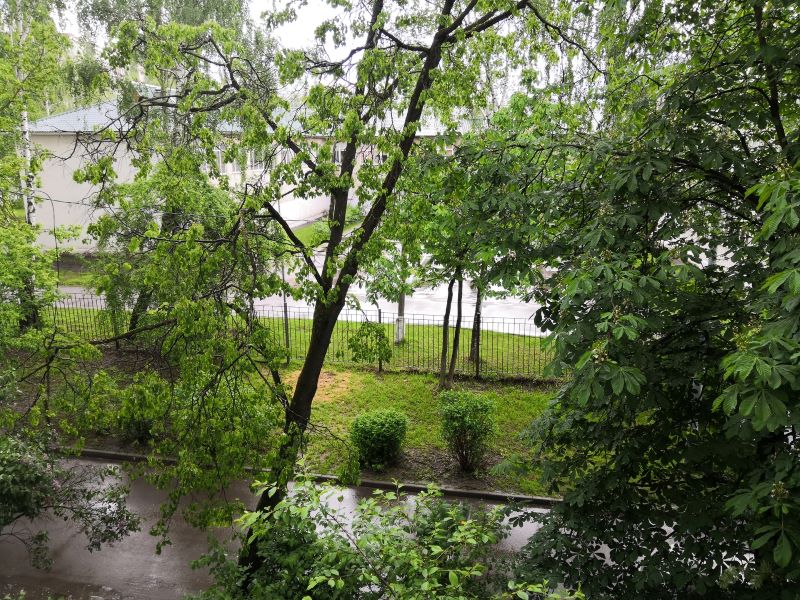Managing Stormwater Runoff is Critical for Clients
By Evelyn Long

Why is stormwater runoff a major concern for environmentally conscious clients? Heavy rainfall causes tons of water to accumulate and run off into streams. The built-up water can lead to flooding and potential property damage. The flooding lifts and wears down pavers, and weakens surface structures. Runoff also washes away soil, causing erosion and polluting the water.
That’s why managing storm runoff is essential for homeowners and commercial clients alike. Here are some ways landscaping professionals can protect their clients’ properties.
1. Build swales
A swale is a shallow vegetated area that helps store runoff and removes pollutants. It helps to redirect and filter stormwater. As the liquid flows along the path, plants absorb it, preventing excess accumulation. Be sure to line the swale with rocks and flowers that thrive in moist conditions.
When designing the swale, pay attention to placement. Install it where the water flows to a garden bed or dry well. Also, the sides of the path should extend out three to four times more than they are tall. This will allow the first few inches to drain well.
2. Install permeable pavers
These pavers have broader gaps, so rainwater flows between them and enters underneath. The water is slowly absorbed through the system and into the soil.
There are multiple types of pavers, including pervious concrete and porous asphalt. To make the concrete water-resistant, ensure manufacturers use less water and include admixtures in the concrete mixture selected.
This paver style prevents water from collecting on top, reducing the risk of flooding. It also helps limit erosion. This maintains vital nutrients for plants and minimizes sediment in water collection systems.
3. Create rain gardens
This type of garden is made of native shrubs, perennials, and flowers within a small, recessed area. Rain gardens are often formed on a natural slope. Some complex systems even have drainage systems and amended soils.
Rain gardens help collect and filter stormwater, removing pollutants. This then reduces the amount of water in storm drains, reducing the risk of flooding.
The gardens also prevent erosion by limiting the breakdown of topsoil. Along with function, they provide aesthetic appeal. The plots offer a beautiful backyard landscape for homeowners and wildlife. Plus, the garden can increase a property’s resale value.
4. Plant more trees
Tree roots can absorb large amounts of runoff. Also, the leaves of a tree can slow the spread of rainfall and allow it to filter over a larger area. Trees can also prevent pools of water from collecting. This accumulated liquid can stress a home foundation and leak into crawl spaces.
To prevent soil contamination, the roots also collect pollutants, such as chemical fertilizers. Trees have other benefits besides stormwater management. They collect about 48 pounds of carbon dioxide annually, and provide shaded areas.
5. Use rain barrels
Rain barrels catch the runoff water from roofs. They prevent water accumulation near foundations, reducing the risk of structural issues. Homeowners can use the collected water for garden plants.
Rain barrels also prevent the drainage system from overflowing and damaging the property. These are even great ways to conserve water and help the environment. Install them at a downspout where water is needed. Elevate the container to improve the flow rate. Use a garden hose, soaker hose, or watering can to dispense the water.
6. Add cover soil
Bare soil is more vulnerable to erosion from runoff. Erosion can deplete nutrients and wear down the soil. So, cover the dirt with mulch or a ground cover to slow the spread of stormwater. Ground covers can include materials such as:
- Grass
- Moss
- Recycled brick or concrete
- Low creeping plants
- Pebbles
These materials are functional and can increase the home’s curb appeal as well.
7. Redirect the downspouts
Downspouts usually are directed toward paved surfaces, like driveways. These surfaces then send water into the streets. As the water flows along the surface, it can potentially break down the asphalt and lead to cracks.
Also, some gutters are connected directly to sewer systems that can overflow. Therefore, redirect pipes so the water flows into a rain barrel or garden. These systems can then slow the spread of water runoff.
8. Install a green roof
A green roof is a layer of vegetation placed over a waterproof system. The plants absorb water and prevent the buildup of heavy rainfall. They slowly collect the water and release it through evaporation.
That stops the liquid from quickly spreading to multiple parts of the roof. Green roofs have other advantages, suchas reducing energy consumption and increasing durability. They are popular in urban areas with less space to install rain barrels or swales.
Runoff water can erode the soil and potentially damage a home’s foundational structures. Properly managing the flow of stormwater is critical. There are many ways to protect landscapes, including planting vegetation and adding rain barrels. So, consider these tips to keep providing excellent customer service.
Evelyn Long is a writer and editor focused on home building and construction. She is the co-founder of Renovated, a web magazine for the home industry.


